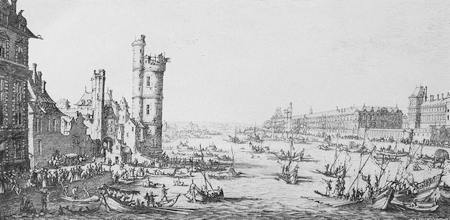TRANSCRIBER’S NOTES:
—Obvious print and punctuation errors were corrected.
—The cover image has been created, added to the project and placed in public domain.

The
Wars of Religion in France
1559-1576

VIEW OF PARIS
From a sketch by Jacques Callot (1592-1635).
The
Wars of Religion in France
1559-1576
The Huguenots Catherine de Medici
and Philip II
BY
James Westfall Thompson, Ph.D.
Associate Professor of European History in
the University of Chicago

CHICAGO:
THE UNIVERSITY OF CHICAGO PRESS
LONDON:
T. FISHER UNWIN, 1 ADELPHI TERRACE
1909
Copyright 1909 By
The University of Chicago
Published May 1909
Composed and Printed By
The University of Chicago Press
Chicago, Illinois, U. S. A.
TO
MARY HAWES WILMARTH
THE LARGESS OF WHOSE SPIRIT HAS MADE THE
WORLD RICHER AND LIFE NOBLER
PREFACE
No one acquainted with the history of historical writing canhave failed to observe how transitory are its achievements. MarkPattison’s aphorism that “history is one of the most ephemeralforms of literature” has much of truth in it. The reasons of thisare not far to seek. In the first place, the most laborious historianis doomed to be superseded in course of time by the accumulationof new material. In the second place, the point of view and theinterpretation of one generation varies from that which precededit, so that each generation requires a rewriting of history in termsof its own interest.
These reasons must be my excuse for venturing to write a newbook upon an old subject. It is now nearly thirty years since theappearance of the late Professor Henry M. Baird’s excellent work,The Rise of the Huguenots (New York, 1879), and little that iscomprehensive has since been written upon the subject in English,with the exception of Mr. A. W. Whitehead’s admirable Gaspardde Coligny, Admiral of France (London, 1904). But the limitationsimposed by biographical history compel an author inevitablyto ignore movements or events not germane to his immediatesubject, which, nevertheless, may be of great importance for generalhistory. Moreover, a biography is limited by the term oflife of the hero, and his death may not by any means terminatet